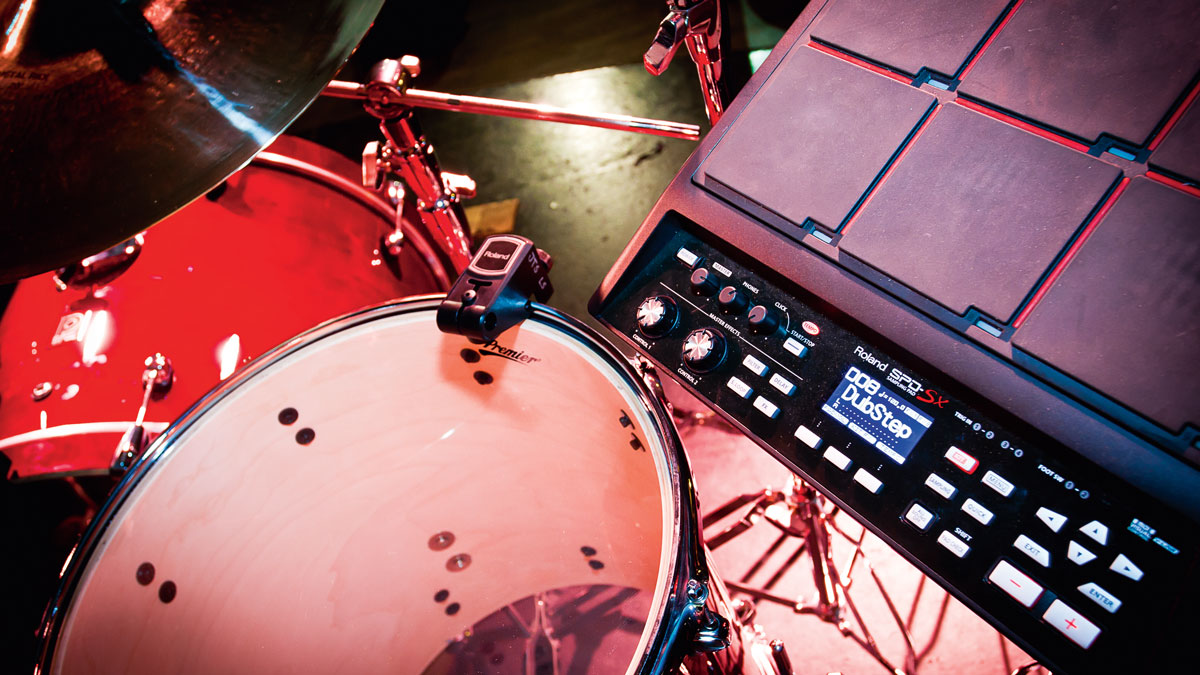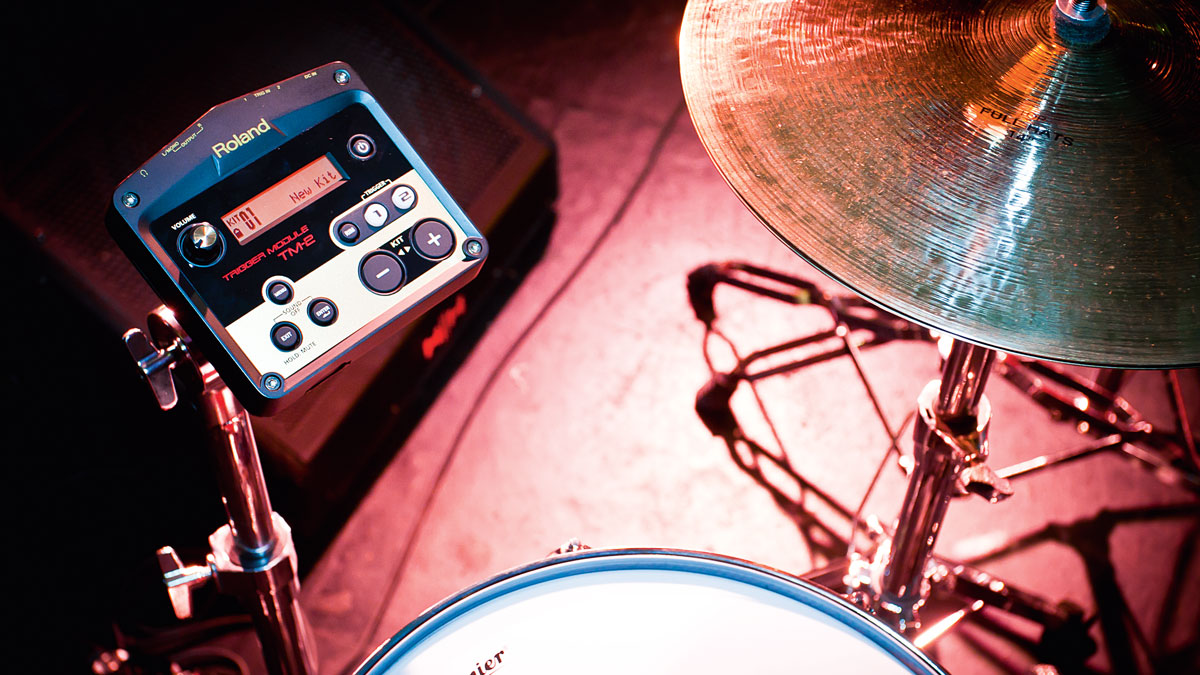Going hybrid, part 1: The drum gear you need to go electro
Get your head around the extra components you'll be adding to your acoustic kit

There was a time when using electronics meant playing not-so-great sounds on unforgiving pads. It was expensive and complicated, and usually the reserve of particular styles.
But those days are well and truly gone. Not only is it more accessible than ever to start incorporating electronic sounds into your set-up, for many of us, it’s becoming vital. From pop to metal, and every style in between featuring electronic drum sounds and effects, adding an electronic element to our acoustic kits - known as a hybrid set-up - gives us the flexibility to sound more authentic, and cover more sonic ground.
There are many gear options available to us, as well as just as many methods for using the technology, depending on what you’d like to achieve. From the simplest of auxiliary sounds such as electronic snares or handclaps, to using full custom samples and backing tracks, let us be your guide as we prepare to plug in, and go hybrid.
Before you can create a hybrid set-up, you’ll need to get your head around some crucial pieces of gear.
With a few additional bits of kit, you can easily start playing additional sounds and samples that just aren’t possible from an acoustic kit. Here’s what it all means.
Acoustic triggers
You’ve probably heard the word ‘trigger’ before, but if you’re unsure as to what that means, let us explain. Let’s be clear, a drum trigger - be it an acoustic trigger or pad – does not produce sound. It produces an electronic signal.
An acoustic drum trigger is the first link in your hybrid chain. Usually attached to the rim of your drum, the trigger comprises either one (single-zone) or two (dual-zone) piezo transducers.
Get the MusicRadar Newsletter
Want all the hottest music and gear news, reviews, deals, features and more, direct to your inbox? Sign up here.
Each transducer makes contact with the drum at different points (usually the head and rim), with each creating a ‘zone’. When you hit the drum, the vibrations are picked up, and the trigger sends a signal down a cable to your module or ‘brain’, telling it to ‘trigger’ the sound you have assigned.
So, a single-zone trigger is capable of producing one trigger signal, while a dual-zone trigger can produce two independent signals. Acoustic triggers are particularly useful if you want to layer sounds alongside the sound of your kit – say, a handclap on every snare hit - without having to strike a different surface and, of course, you maintain the feel of your acoustic drum.
Pads
Drum pads work in the same way as an acoustic drum trigger, apart from that they are self-contained units comprising the electronic trigger and at least one playing surface.
They also come in different shapes and sizes; drum or cymbal pads or ‘bar’ triggers like the Roland BT-1 allowing them to be used in different ways. Pads are most commonly available with either rubber or mesh playing surfaces.
The latter gives the option to adjust the tension of the head, giving a more realistic feel from the pad, and just like an acoustic trigger, most offer one or two playing zones.
Using a pad instead of an acoustic trigger is particularly handy if you need or want to keep the sound you’re producing separate from the rest of your kit.
Footswitches
Many modules include the option to connect a footswitch. Using a footswitch is a great option for carrying out non-playing tasks, such as changing patches between songs, or starting/stopping loops without using up one of your trigger inputs.
Modules
Your module - often referred to as the ‘brain’ - is the centre of your hybrid set-up. Each of your triggers will be connected to their own inputs on the brain, and when it receives the signal from the trigger, it will produce whatever sound you have assigned to it.
Of course, you and the audience also need to be able to hear it, so the audio output of the brain is sent to a PA system to be amplified.
Multi Pads
These self-contained units have you covered all in one box by combining a brain with one or more pads. As well as playing surfaces, these types of boxes can usually accept external triggers, which is great if you want to place pads at different points on your kit for easier playing, or trigger your bass drum.
Monitoring
Sounds from your module will obviously require amplification in order to be heard, and while your PA speakers will have your audience covered, it’s vital - especially when playing with backing tracks to a click - that you can hear them too. We’ll cover how and why later on, but a good set of in-ear monitors are your friend here.

I'm a freelance member of the MusicRadar team, specialising in drum news, interviews and reviews. I formerly edited Rhythm and Total Guitar here in the UK and have been playing drums for more than 25 years (my arms are very tired). When I'm not working on the site, I can be found on my electronic kit at home, or gigging and depping in function bands and the odd original project.










